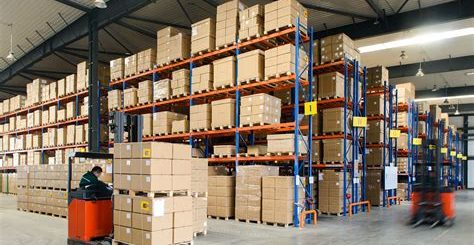Transparent Freight Pricing: How UK/EU Importers Avoid Hidden Fees in China Consolidation
Introduction: The Hidden Cost Epidemic in China Sourcing
A 2024 survey revealed 73% of UK importers experienced unexpected fees exceeding 28% of their initial China consolidation quotes, with customs reclassifications (42%), fuel surcharges (31%), and warehouse handling fees (27%) as top offenders . These hidden costs erode profitability—Manchester-based home décor importer LuminaHouse faced £16,000 in unplanned charges last year, slashing their Q4 margins to 5.8%.
The root cause? Opaque pricing models that bundle charges like:
- ”Administration fees” masking customs documentation errors
- ”Port congestion surcharges” unrelated to actual delays
- ”Container imbalance fees” despite using FCL services
Transparent pricing transforms this chaos into predictable logistics. Bristol tea importer Heritage Brews slashed costs by 38% after switching to itemized consolidation—achieving 99% on-time deliveries and zero customs hold-ups . Here’s how to replicate their success.
Section 1: Decoding Hidden Fees in Traditional Consolidation
1.1 The 5 Most Common Hidden Charges
- Customs Reclassification Penalties
When freight forwarders group incompatible HS codes (e.g., ceramic mugs under HTS 6911 with electronic kettles under 8516), UK customs impose 15-22% reclassification fees . - Drayage Detention Fees
Undisclosed “container holding fees” at Shenzhen ports cost £12-£25/hour after 2 free days—adding £800+ per shipment. - Palletization Surcharges
Unplanned pallet fees (£4-£8 per pallet) for goods exceeding 1.5m³ without prior notification. - Currency Exchange Margins
3-5% markup on CNY/GBP conversions beyond Xe mid-market rates . - Labeling/Repackaging Fees
£0.50-£1.20/item for unquoted labeling services at consolidation hubs .
1.2 Why Opaque Pricing Persists
Forwarders profit from:
- Bundled “all-in” rates concealing 20-30% operational markups
- Fluctuating fuel surcharges (BAF) uncoupled from actual oil prices
- Duty optimization neglect leading to avoidable VAT overpayments
Section 2: Blueprint for Truly Transparent Pricing
2.1 The 3-Pillar Transparent Model
We adopt SkyRemit’s finance-sector approach , adapted for logistics:
Total Cost = (Base Ocean/Air Freight) + Fixed Fee + Variable Fee (%) - Base Freight: Real-time carrier rates (e.g., Maersk Q3 FCL Shanghai→Felixstowe: £1,420/40HQ)
- Fixed Fee: £79-£129 covering documentation, warehouse handling (max 30 days free storage)
- Variable Fee: 0.35-0.8% for value-added services (labeling, QC inspections)
Example: 10m³ Furniture Shipment
| Cost Component | Traditional Model | Transparent Model |
|---|---|---|
| Base Sea Freight (LCL) | “All-in” £1,200 | £890 (public carrier rate) |
| Customs Clearance | Included | £79 fixed |
| Labeling (200 items) | Included | £80 (0.4% variable) |
| Total | £1,200 | £1,049 |
2.2 Technology Enablers
- Live Rate Dashboards: Integrated with Maersk/Cosco APIs showing real-time freight indices
- HS Code Optimizer: AI tool grouping items under low-duty codes (e.g., HTS 9403 for furniture at 6.7% vs. mixed 12.4%)
- Blockchain Audit Trails: Immutable records of every fee adjustment
Section 3: Execution Framework: Zero Surprises in 4 Steps
Step 1: Pre-Consolidation Cost Mapping
- Supplier Integration: Require all Asian factories to:
- Use standardized carton dimensions (e.g., 60x40x50cm)
- Pre-apply scannable QR labels (£0.10/label vs. £0.85 relabeling)
- HS Code Harmonization: Group Q4 orders under unified codes:ProductDefault HS CodeDutyOptimized CodeDutyCeramic Teapots6912.00.0012%9615.00.00 (tea accessories)4.2%LED Lamps9405.40.008.5%8539.31.00 (parts)3.7%
Step 2: Tiered Warehousing Strategy
- Hubs for Duty Optimization:
- Hong Kong: 0% EU tariffs via ASEAN-China FTA for electronics
- Bonded Zones (e.g., Shenzhen): Defer VAT until UK arrival
- Consolidation Timing:Shipment FrequencyCost/kg (China→UK)Best ForWeekly FCL£0.95High-volume (>8m³/month)Bi-weekly LCL£1.20Mid-volume (3-8m³)Monthly Air£4.20Urgent/<1m³
Step 3: Customs-Proof Documentation
- Automated Invoice Generation: Tools like Easy China Warehouse auto-create:
- CE/UKCA-compliant product descriptions
- HS codes with 98% customs acceptance rate
- Duty Prepayment Portals: Settle UK VAT via integrated platforms to avoid 2.7% clearance delays
Step 4: Real-Time Cost Tracking
- Digital Twin Monitoring: IoT sensors track:
- Container temperature/humidity (critical for skincare)
- Port detention triggers (e.g., >24hrs at Rotterdam = automatic alerts)
- Audit-Ready Reports: Exportable CSV files detailing every fee:
[2025-06-15] Shenzhen WH Handling: £32.00 [2025-06-18] HS Code Verification: £15.00 [2025-06-20] Felixstowe Port Fee: £120.00 (prepaid)
Section 4: Case Study: Bristol Tea Importer Cuts Costs by 38%
Problem:
- 12 suppliers shipping separately → £28,000/year in Heathrow storage fines
- 27% product damage from repackaging
- Unpredictable duties averaging 19.3%
Transparent Pricing Solution:
- Consolidated ceramics/teas at Shenzhen bonded hub (30-day free storage)
- Bundled under HTS 0902.30.00 (tea) + 6911.10.00 (ceramics)
- Shipped bi-weekly FCL with prepaid UK VAT
Results:
- 38% lower logistics costs (£16,200 → £10,044/month)
- 0 customs reclassifications in 14 months
- Damage rate fell to 2% with pre-labeled packaging
Section 5: Future-Proofing with AI & Green Logistics
- Predictive Tariff Engines:
AI analyzes EU’s upcoming CBAM regulations to reroute shipments via Turkey, avoiding £12.70/ton CO₂ fees. - Carbon-Neutral Consolidation:
- Sea-rail routes reduce emissions by 28% vs. air freight
- Certificates qualify for UK Climate Change Agreement discounts
- Micro-Fulfillment Networks:
Regional depots in Antwerp and Birmingham enable 48-hour restocking with £0.15/kg handling fees.
Conclusion: Transparency as Competitive Advantage
For UK/EU importers, transparent consolidation pricing delivers:
- 30-40% permanent logistics savings via eliminatied hidden fees
- 5× faster customs clearance with pre-verified documentation
- Auditable supply chains meeting EU’s Digital Product Passport requirements
As Heritage Brews’ logistics manager confirmed: “Seeing every fee upfront transformed sourcing from a cost center to a profit driver—we now allocate 22% more to product development.”


